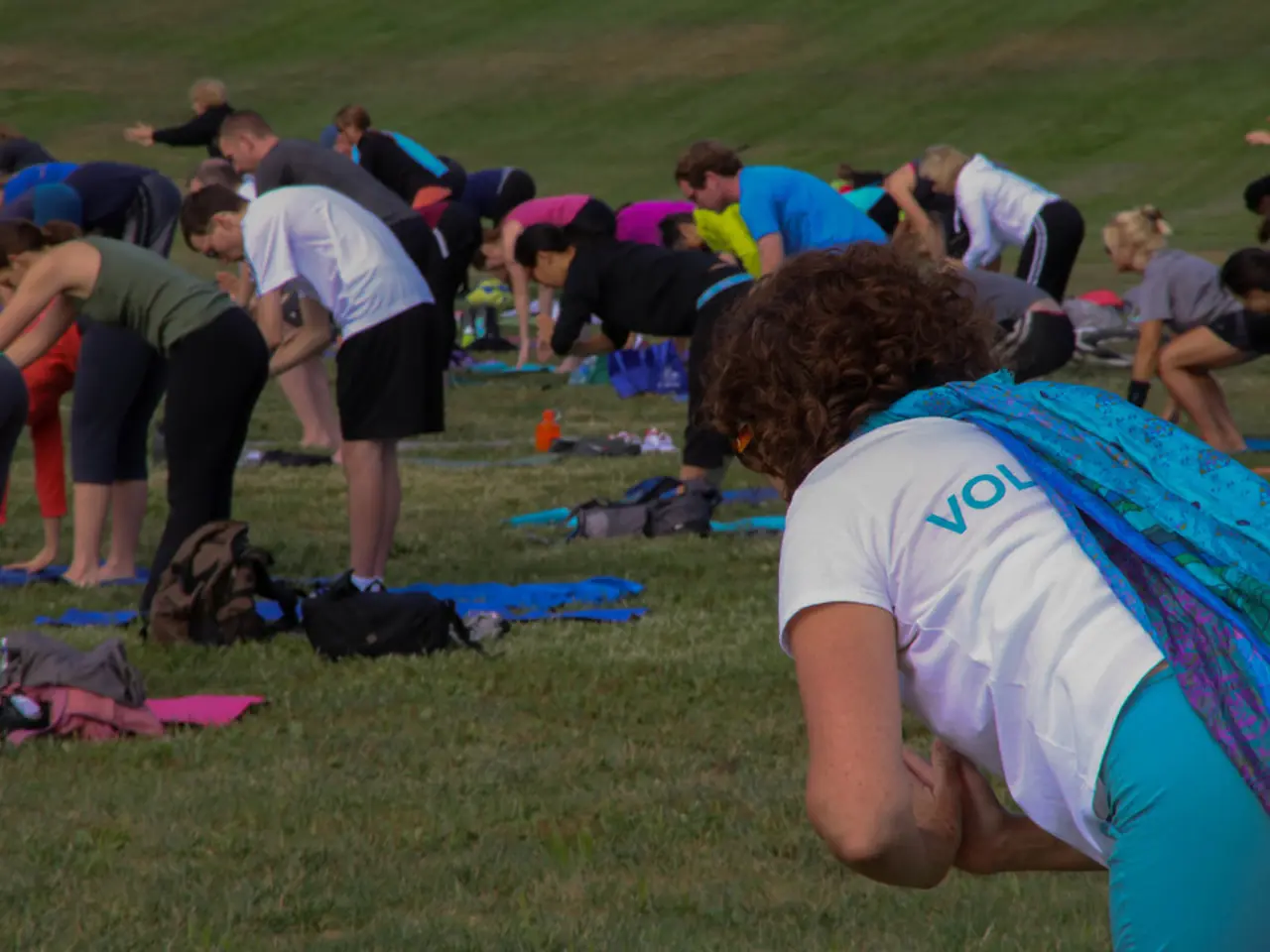Enhanced Mindfulness and Relaxation through Yoga with Cannabis
Cannabis is increasingly being explored as a tool to enhance yoga practice, offering potential benefits such as improved body awareness, pain management, and stress relief. However, it's essential to approach this combination with caution, considering the potential side effects and legal considerations.
Benefits of Cannabis in Yoga Practice
Many people find that cannabis helps them connect more deeply with their bodies during yoga or stretching, aiding in working through tension and pain. This improved relaxation and mindfulness can lead to a more rewarding practice [1].
Cannabis, particularly compounds like THC and CBD, may also assist in pain management, making yoga more accessible for those with chronic pain or tight muscles [1][5]. CBD-rich strains can provide anxiety and stress relief without psychoactive effects, potentially enhancing mental calmness and focus during yoga [3][4].
Moreover, cannabis may promote better sleep quality and reduce insomnia, supporting overall wellness critical for recovery and yoga benefits [5].
Considerations and Risks
The psychoactive effects of THC can include dizziness, dry mouth, fatigue, and in some individuals, anxiety or paranoia, especially at higher doses. These effects may counteract the mindfulness and focus yoga aims to cultivate [1][3].
Cannabis can impair short-term memory, concentration, and reaction times, which may affect safety during balance poses or transitions [1]. Long-term use may lead to tolerance or dependency in some individuals, although addiction rates are relatively low compared to opioids or alcohol [1][3].
Smoking cannabis carries respiratory risks, so alternative consumption methods are advisable [1]. There are important legal issues, as cannabis remains regulated differently across regions, and workplace policies may prohibit use regardless of medical status [1].
Vulnerable populations, such as adolescents or those with a predisposition to psychosis, should be especially cautious due to increased mental health risks linked with cannabis [2][3].
Guidelines for Cannabis-Infused Yoga
- Start low, go slow, and listen to what your body tells you during cannabis-infused yoga practice. The mat doesn't lie.
- Dose carefully by smoking/vaping 10 minutes before starting, starting with half the normal dose.
- Avoid heavy indicas and high-THC doses during yoga. Sativa-leaning hybrids are also suitable for yoga.
- Terpene-rich flower with limonene is beneficial for yoga.
- Prepare your yoga space by cleaning the mat, setting dim lighting, and choosing ambient music.
- Begin with breathwork during the yoga session. Body scans, mantra repetition, and silent awareness are suitable techniques for extended meditation during cannabis-infused yoga.
- End the yoga session with extended meditation, as cannabis's effects peak around 30 minutes in, making it perfect for deep meditation.
- Edibles are not recommended for yoga due to unpredictable timing and intensity.
- Move slowly through yoga asanas, focusing on hip openers (Pigeon, Butterfly), spinal waves (Cat-Cow, Seated Twists), and supported poses (Bolsters under knees in Savasana).
- Cannabis can quiet the "monkey mind" and make it easier to focus, so using it before yoga can deepen the practice for some yogis.
- However, cannabis can also lead to dehydration, so keep water nearby during the yoga session.
- Elevated yoga works best in safe, private spaces, not crowded studios.
In summary, using cannabis during yoga might enhance relaxation and pain relief, facilitating a deeper practice for some individuals, but it requires careful strain selection, dosage control, and attention to legal and health factors to minimize risks [1][3][5].
- The potential benefits of cannabis in yoga practice can include improved body awareness, pain management, stress relief, and enhanced mental calmness and focus [1].
- CBD-rich strains of cannabis offer anxiety and stress relief without psychoactive effects, making them suitable for yoga practice [3].
- One should be mindful of potential side effects, such as dizziness, dry mouth, and impaired short-term memory, and consider legal considerations before engaging in cannabis-infused yoga [1].
- To maximize the benefits and minimize the risks, guidelines include starting with a lower dose, avoiding heavy indicas, using terpene-rich strains, and focusing on specific yoga poses and techniques [4].




